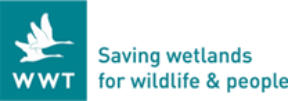©copyright derek gow consultancy 2018
Wildfowl and Wetlands Trust - Arundel
In September 1999 34 water voles were
released into the grounds of the Wildfowl
and Wetlands Trusts reserve at Arundel.
This was the first ever attempt to
reintroduce the species using captive bred
individuals into a landscape where it was
believed to be extinct.
Subsequent surveys revealed a few animals in a
recapture programme in 2002 and sporadic
sightings of single individuals were recorded in
2004. No field signs of this species were found
on site during a series of surveys in 2005 and it
was presumed that this population had either
become extinct or was so numerically low as to
be considered unviable in the medium term.
A remarkable aspect of this early attempt was
that it succeeded in establishing a small
population which survived. The release timing
was very late for effective breeding in the year of
release as it was believed that water voles
commonly cease breeding in mid to late
September. Although the project was supported
by a further smaller release in the spring of 2002
the numbers involved were small and were
drawn almost entirely from a relatively small pool
of genetic founders. Genetic interchange is now
known to be a critical feature in the successful
survival of water vole meta- populations. As soon
as isolation occurs even substantial populations
are highly vulnerable to a reduction in fecundity.
This factor coupled with an absence of
immigrating offspring can result in eventual
extinction.
A significant flood event in 2001 further
compromised the prospects of this population
and as a result the concept of attempting to
introduce a numerically significant, genetically
diverse population at an appropriate seasonal
timing was felt to be worth while. On the 16th
of August 2005, 82 male and 89 female water
voles (Arvicola terrestris ) bred from 7 mixed
founder bloodlines at the breeding facility of
the Derek Gow Consultancy Ltd near Lifton in
Devon were released into the grounds of the
Wildfowl and Wetlands Trust's Arundel Centre.
A significant number were released into the
newly created 'Wetlands Discovery Area' where
they rapidly became used to visitors on boats
and proved to be a highly visible and popular
feature of the experience. The population was
resurveyed from the 7th - 11th of November
using live catch traps in order to assess
individual weight gain, breeding status and
juvenile abundance. A further follow up survey
was undertaken in March 2006. Field signs by
this time were well distributed throughout the
site and the capture of a 75g juvenile
confirmed that there had been breeding. Water
voles are now well established throughout the
grounds of the site. Free living populations
have formed from migrants outwith the fence
and at least one of these is now believed to be
self sustaining.
Links - click on the logo below

Specialists in water vole ecology














